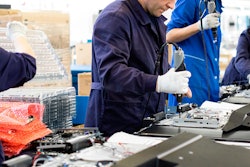The online business-to-business world in the manufacturing sector is increasingly content-driven, and arguably more global in nature than it’s ever been.
No matter where in the world your business is headquartered, you may be considering how you can serve new customers in international markets. But translating your entire website to serve a worldwide marketplace seems like a daunting—and expensive—proposition. With most B2B buyers getting more than halfway through their buying process before meeting with a sales representative, and much of that informed by online content, a translated website isn’t just a “nice to have” anymore, it’s a necessity.
The good news is that today’s approaches to website translation are as modern as the businesses they serve. And it’s possible to build a global website that drives demand for your business while also working within the lean budgets that are all too familiar for today’s B2B companies.
Let Business Objectives Take The Lead
When you’re translating your website for a global market, it’s easy to get bogged down in the mechanics of translating all the text and content you have today. That can make for an overwhelming start to what seems like an impossible task.
But before you worry about what to translate, it’s important to ask yourself why you’re translating your site in the first place.
Perhaps you’re entering a new global region for the first time and it’s critical that prospects can find your business when they’re looking for a new manufacturing partner. In that case, it makes sense to think about brand awareness and discoverability as a primary objective for your translation efforts. Consider best practices for search engine optimization and translate not only the visible content on your website, but also the all-important metadata that lives beneath it.
If you already have a fair amount of brand recognition in the region and you’re looking to drive demand, look at the site content that underpins your lead capture process—from downloadable assets to forms and landing pages—and ensure that everything flows seamlessly in any language.
Deliver a Standout Customer Experience
Today’s translation capabilities make it easy to greet your customers in their native language from the moment they arrive at your site.
And while many companies focus only on translating text content, you shouldn’t neglect the multimedia on your site—from images to video captions to application-based content—so visitors will never encounter a disjointed, multi-language experience with your content. It’s also important to customize and localize product selections or promotional content that’s only served on-site to visitors in specific geographies.
Once your content is translated, consider leveraging a translation memory database so that it can easily be re-used and repurposed both across your existing site and in other online marketing channels like email and social media. Carrying your helpful, useful content across channels in the languages your customers use most can build trust and loyalty and signal to the market that you truly value their business.
Excelling at customer experience ultimately requires you to keep up with the pace of content changes across your site, anytime. If your product specifications, brochures, or technical support articles are continuously updated, you should offer translated versions so your global customers can always get the information they need in the language they prefer.
Look to Modern Translation Methods
Website translation has typically been defined by two distinct options: human translation and machine translation.
Human translation excels at accuracy and quality, thanks to the hands-on approach of having individual translators reviewing and translating all the content for your site. But the labor-intensive process can result in high per-word translation costs, and changes to content or new additions to your site must go through the same manual translation process, which can slow down your global business.
By contrast, machine translation is efficient and cost-effective, but its limited vocabulary and word choice can stunt brand messaging and market positioning or, in the case of highly-specialized or technical language, miss these altogether. Its lack of expert oversight also means translation accuracy and quality suffer.
Thankfully, hybrid translation approaches exist today to strike a balance between high-touch human translation and fast, efficient machine translation. This approach requires you to identify areas of your site that are a good fit for low-cost machine translation, like repetitive product specifications or item descriptions, while surfacing the aspects of your site that need the touch of an experienced translation team.
By focusing human translation efforts on the more nuanced, culturally-specific content that embodies your brand while offering quality assurance of machine-translated content, your site can reap the benefits of high-quality translation combined with the cost and effort efficiencies that only advanced technology can provide.
A Modern Manufacturer’s Approach to Website Translation
Every business can relate to the inevitable resource limitations that come with trying to grow and scale a global manufacturing company. And building a website to serve international customers can seem like a project that’s always out of reach.
But the advances in website translation technologies combined with smart, adaptable human expertise can provide a keen balance of cost, content quality, and scalability that today’s leading B2B manufacturers need to succeed in a digitally-driven world.
Craig Witt is executive vice president of global sales, marketing and go-to-market at MotionPoint.























